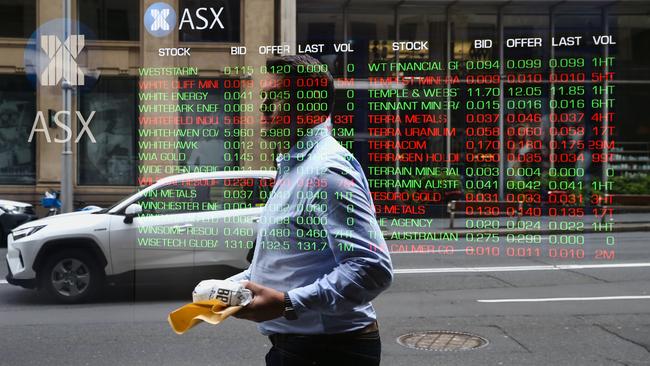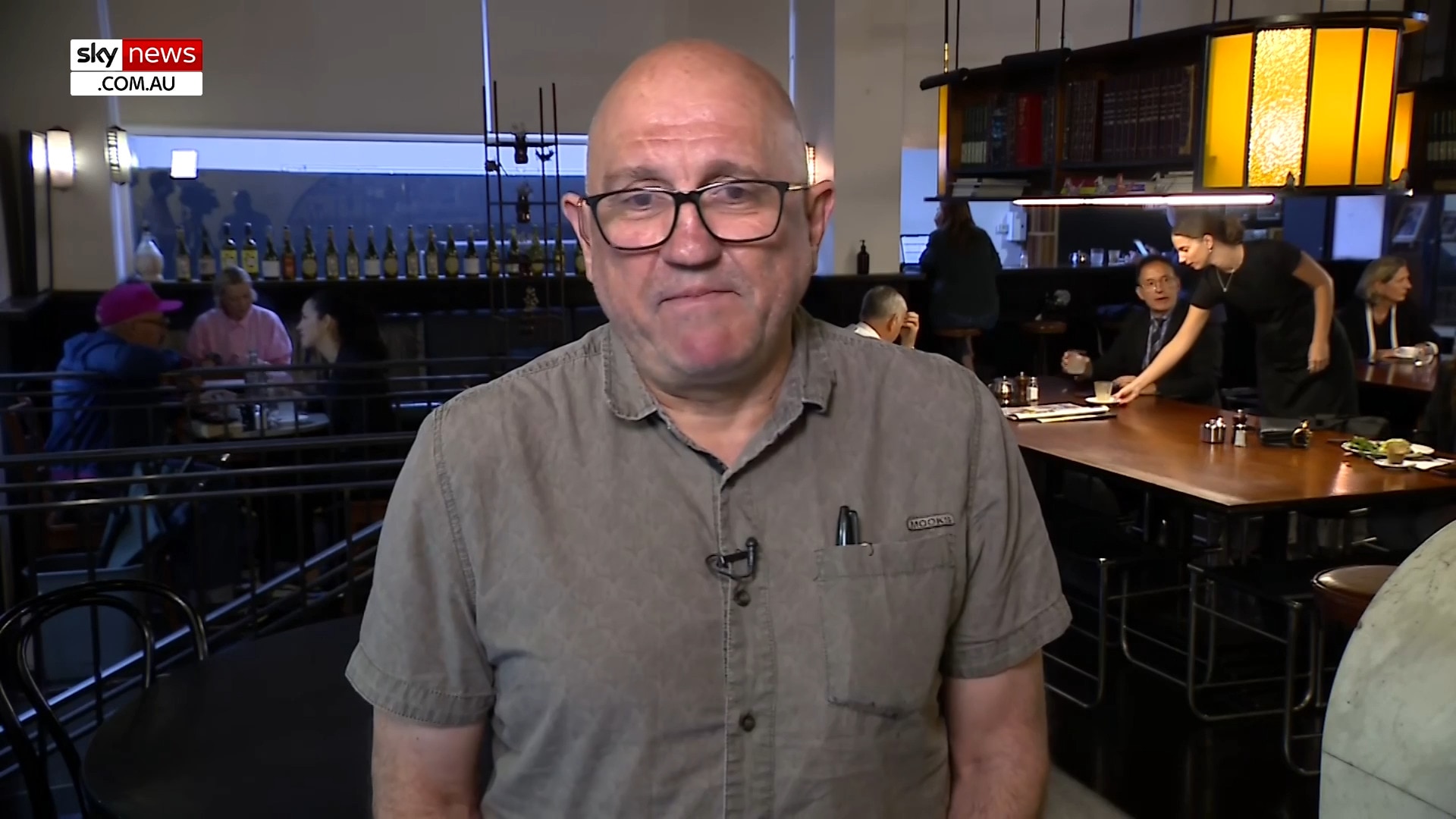Profit margins under scrutiny as reporting season turns ugly
Corporate profits look to have bottomed but a long-waited recovery may be delayed, with banks disappointing and resources companies cutting dividends.

Business
Don't miss out on the headlines from Business. Followed categories will be added to My News.
It has had its bright spots but the half-year reporting season turned ugly this week.
To make matters worse, the Reserve Bank was surprisingly hawkish on the interest rate outlook, even as it delivered a widely expected cut in its cash rate target to avoid an inflation “undershoot”.
By the time reporting reached the halfway mark on Thursday, the aggregate earnings estimate had been cut by 1.3 per cent, or $2.3bn — almost twice as much as the usual reporting season downgrade.
As of last week the consensus estimate of aggregate earnings by the top 200 companies had only been downgraded by 0.2 per cent, or $350m, to $143bn.
At the time it was going a bit better than the average reporting season downgrade of 0.7 per cent.
“While the reporting season started off strongly as is often the case, results over the last week were softer with disappointing bank results and falling earnings and dividend cuts for resources companies,” AMP’s head of investment strategy and chief economist, Shane Oliver, said.
In terms of market capitalisation, nearly 70 per cent of the ASX 200 had reported by Friday.
The downgrade was worse after accounting for the fact that the Australian dollar has risen about 3 per cent since reporting started. About 30-40 per cent of profits are reported in US dollars.
“I don’t recall a recent reporting season that started so well only to unravel at the seams like this one has,” IG market analyst Tony Sycamore said.
The less upbeat outlook for corporate earnings was underscored by a five-day fall in the Australian sharemarket, its longest string of daily losses in over two months.
The ASX 200 index soared to a record high of 8615.2 points last week amid strong global markets and expectations that interest rate cuts were about to get underway.
However, since then it has fallen as much as 3.8 per cent, hitting a five-week low of 8287.8.
Despite strong results from QBE Insurance, a new four-month high in iron ore and a takeover offer for Domain Holdings, the ASX 200 continued to fall on Friday, closing at 8296.2 points.
Commonwealth Bank fell 2.6 per cent to a $151.73, its lowest daily close in over five weeks.

Commonealth Bank has now fallen almost 10 per cent since it hit a record high of $167.92 after its interim report as trading updates from Westpac and NAB showed some downward pressure on net interest margins.
“Margin compression is, yet again, an important theme for the reporting season but we think this compression is higher quality than those in the past,” MST senior analyst Hasan Tevfik said.
Despite a weaker earnings outlook, the outlook for free cash flow improved for industrial companies and some of the margin downgrade “might be just an accounting issue”, Mr Tevfik said.
“Free cash flow is still enough to maintain dividends or grow them … this is a positive sign.
“The rise in free cash flow forecasts have helped to fund the stronger outlook for dividends for industrial companies, despite the earnings downgrades.”
Financial year 2025 dividend forecasts for the ASX 200 were revised down slightly as commodities sector dividends were revised down almost 3 per cent. But financials sector dividend estimates rose about 0.25 per cent and industrials sector dividend forecasts rose about 0.75 per cent.
However, while corporate profits look to have bottomed, a long-waited recovery may be delayed.
“We continue to believe we’re in the less bad phase of the Aussie profits cycle – the cyclical trough in earnings per share appears to have been somewhere between December 23 and June 24,” Mr Tevfik said.
“However, the expansion phase may be further out than we initially thought.”
AMP’s Dr Oliver added: “Of course with the market priced for perfection, and financials and resources dominating in the ASX 200, it has taken a hit as they disappointed.”
In terms of market capitalisation, the big banks have done most of the damage in the past week.
The S&P/ASX 200 banks index – which accounts for about 23 per cent of the ASX 200 – has fallen over 10 per cent after hitting a record high last Thursday.
The materials sector also weighed on the sharemarket as Fortescue fell more than 6 per cent on the day of its earnings report as its earnings and dividend missed estimates.
But by the end of the week, iron ore futures were hitting four-month highs near $US110 a tonne after US President Donald Trump said a trade deal with China was “possible” and China’s Finance Minister Lan Fo’an reiterated that Beijing plans to implement more proactive fiscal policies this year.
In its earnings report this week, BHP Group chief executive Mike Henry flagged signs of “green shoots” in China’s housing market – a major consumer of steel.
MST’s Mr Tevfik said smaller companies have had the worst of reporting season so far.
The consensus earnings estimate for the Small Ordinaries index has been revised down by 3.9 per cent by Thursday, with most of that coming from an 8.3 per cent downgrade for small miners.
AMP’s Dr Oliver noted that there has also been further increase in share price volatility around results, with company share prices moving more than 9 per cent on average on reporting day.
According to UBS, this may be due to increasingly stale earnings estimates going into reporting day resulting in bigger surprises up and down. Rich valuations are likely also playing a role.
But despite the issues at big banks and resources companies, “beats are still running above misses”, according to Dr Oliver. He said 42 per cent of results have surprised positively – just above the norm of 40 per cent. And just 30 per cent surprised on the downside, well below a norm of 41 per cent.
About 58 per cent of companies have seen their earnings rise on a year ago, slightly above the norm of 56 per cent.
“It’s better than in 2023 and highlights that while there may have been some bad news from banks and resources, most companies are seeing improvement,” Dr Oliver added.
About 60 per cent of companies have increased their dividends compared to a year ago which is in line with the norm, but also up from its recent low, according to Dr Oliver.
Moreover it hasn’t been all doom and gloom. For example, Telstra jumped 5.6 per cent to $4.14 after announcing a $750m share buyback on a solid earnings beat driven by surprising strength in mobiles.
Originally published as Profit margins under scrutiny as reporting season turns ugly



